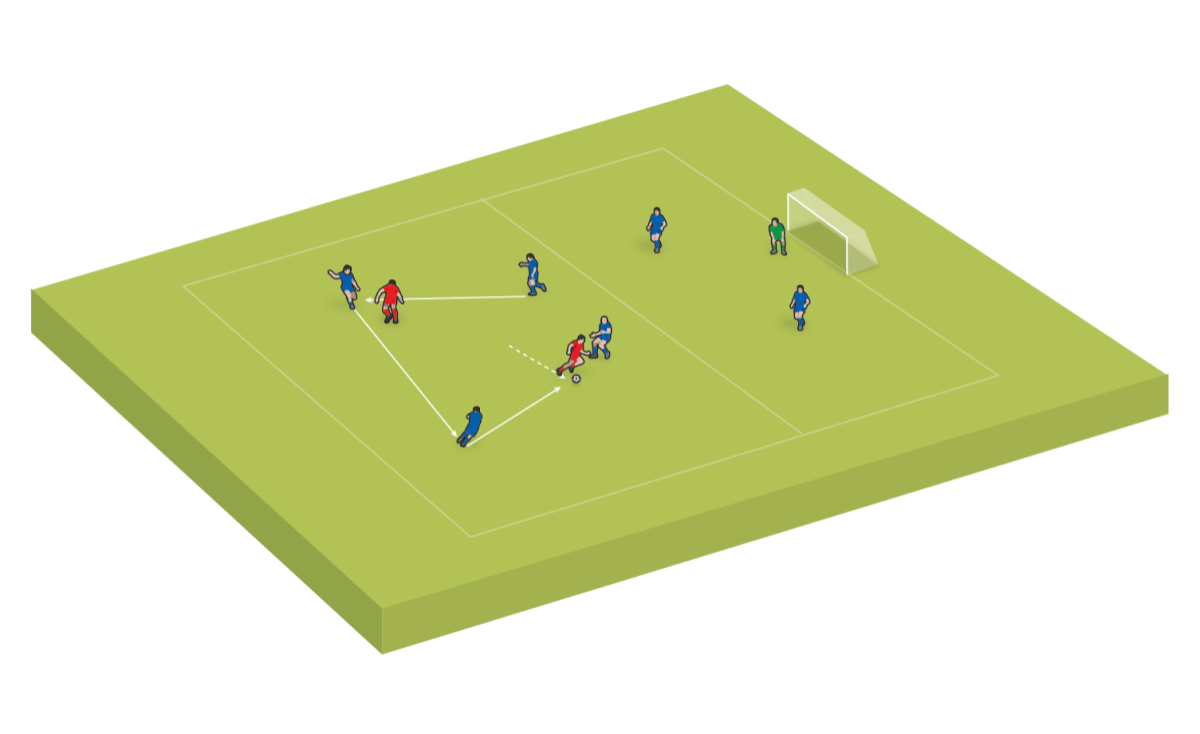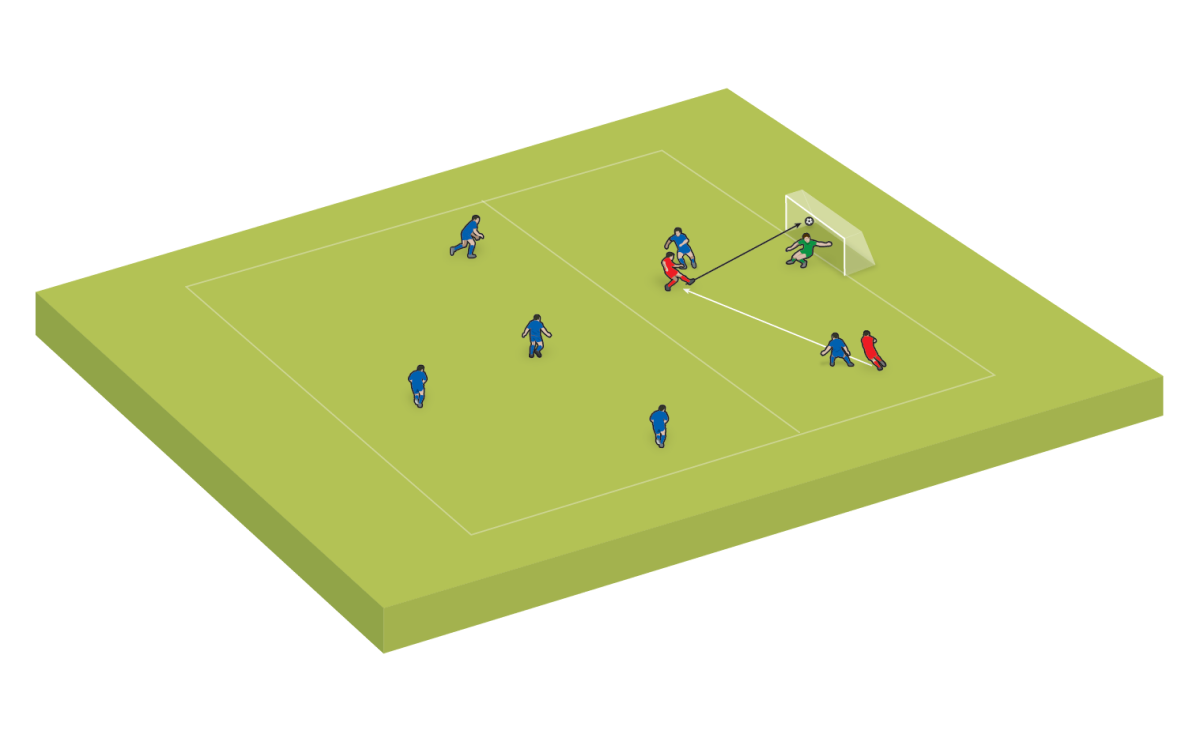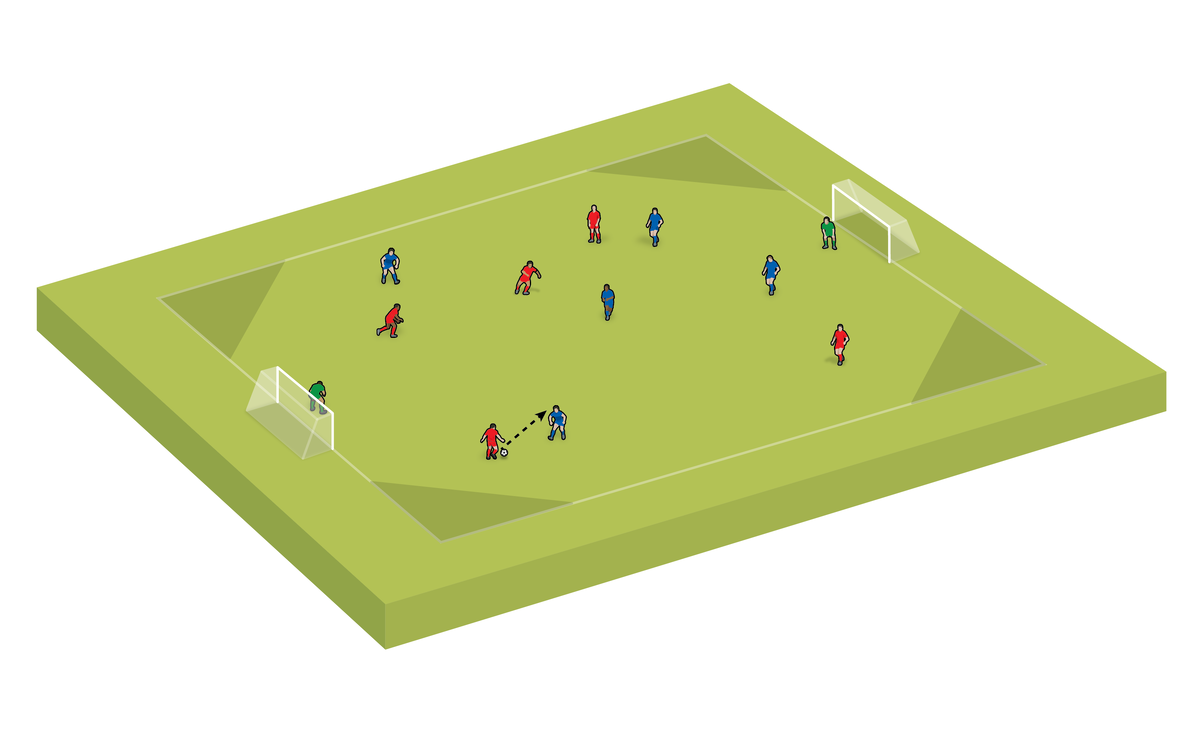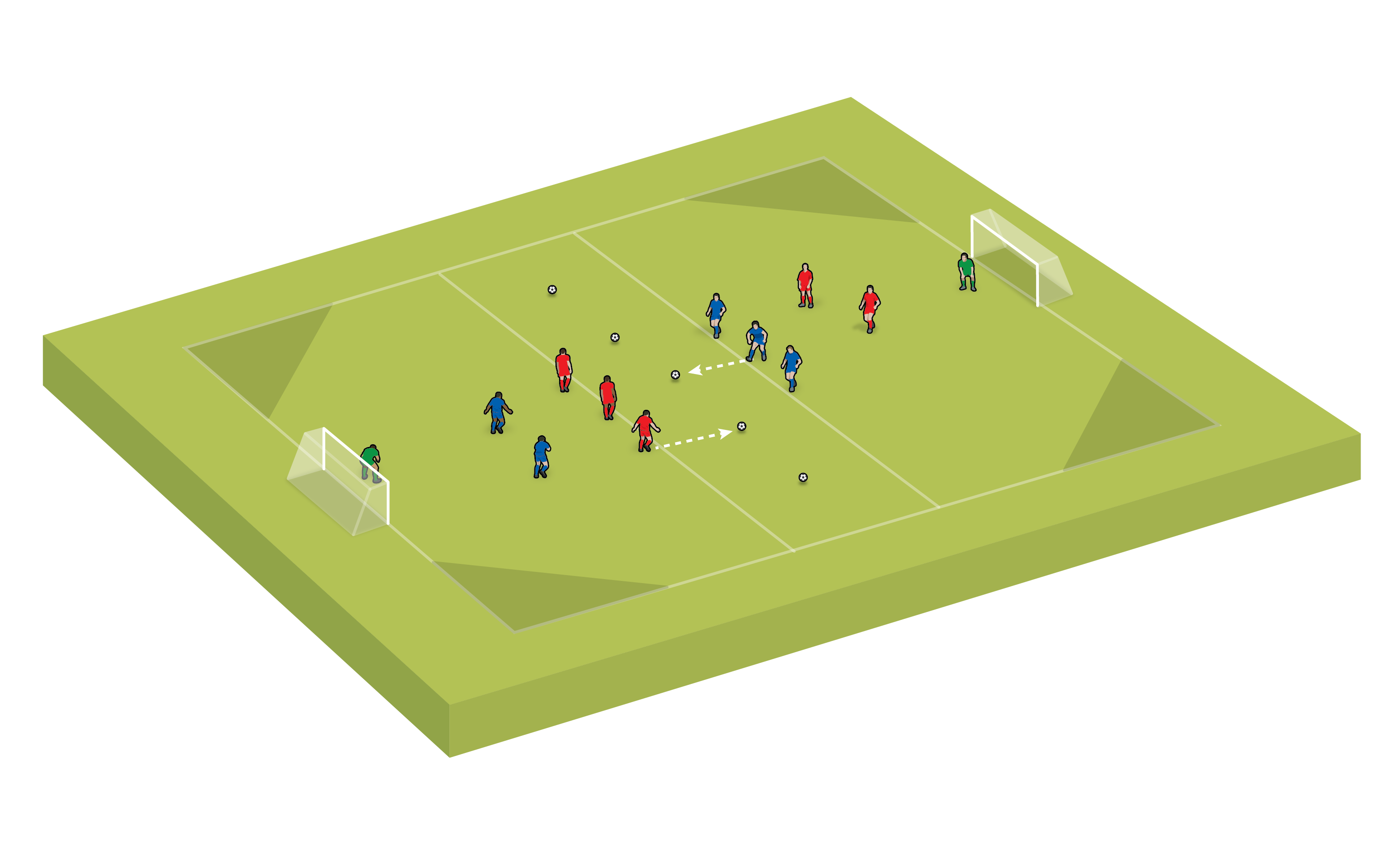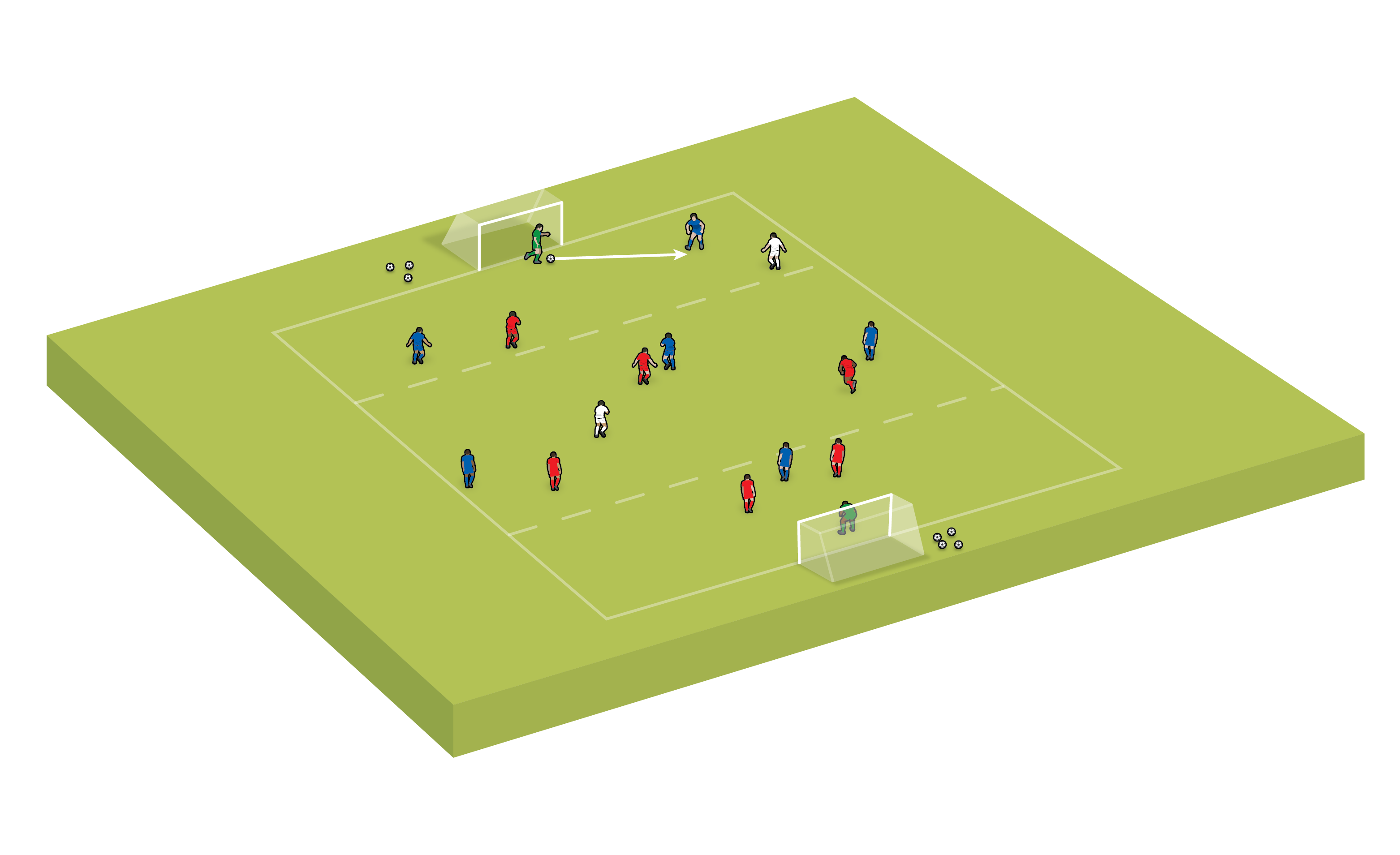Pressing strikers
When you play with two up front, you need them to work together to hunt down the ball and communicate well.
WHY USE IT
Get your strikers to work together, press as a unit and communicate so they can win the ball and combine to score.
SET UP
Set up an area relative to the age and ability of your players. Split it into one third and two thirds, with a goal at the end of the one third. The strikers play as one team (the Reds) and the rest – in our example, a team of six plus a goalkeeper - play as the other (the Blues). Four of the Blues and the Reds start in the bigger area and two Blues and the goalkeeper start in the smaller area.
HOW TO PLAY
Blues have the ball in the big area and look to keep it while the Reds try to win it. They get a point by making a set number of passes. If the Reds win it, they attack the two defenders in the smaller area and try to score. If the ball goes out of play before the Reds can control it, a coach can pass them a ball on halfway and they can attack the defenders from there. If the Blues win it from the Reds in the small area, they must play it back to the Blues in the big area to win a point.
COACHING POINTS
Red team: How can you put pressure on together? When one player engages, what does the other do? When you win it, can you attack quickly?
Blue team: How can you use the space to keep hold of the ball? Defenders, how can you work together to win it?
Related Files
Coaches Testimonials

Gerald Kearney, Downtown Las Vegas Soccer Club

Paul Butler, Florida, USA

Rick Shields, Springboro, USA

Tony Green, Pierrefonds Titans, Quebec, Canada
Soccer Drills
Discover the simple way to become a more effective, more successful soccer coach
In a recent survey 89% of subscribers said Soccer Coach Weekly makes them more confident, 91% said Soccer Coach Weekly makes them a more effective coach and 93% said Soccer Coach Weekly makes them more inspired.
*includes 3 coaching manuals
Get Weekly Inspiration
All the latest techniques and approaches
Soccer Coach Weekly offers proven and easy to use soccer drills, coaching sessions, practice plans, small-sided games, warm-ups, training tips and advice.
We've been at the cutting edge of soccer coaching since we launched in 2007, creating resources for the grassroots youth coach, following best practice from around the world and insights from the professional game.
